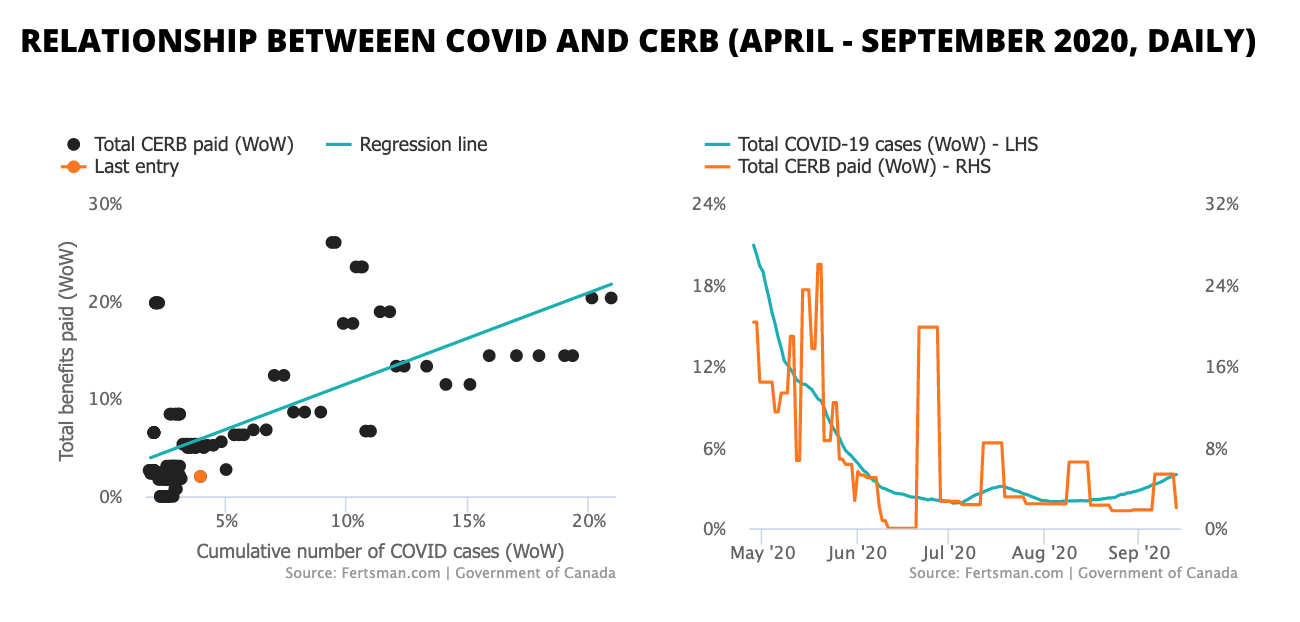Changes in CERB benefits paid followed changes in COVID-19 cases reported
Programs like CERB, which just ended this past weekend, will likely continue to exist in Canada while the pandemic is in play and economic conditions remain weakened as a result. These programs provide some cash to allow folks to at least partially bridge the gap between their expenses and income after they've lost their jobs or portions of their income.
A big question now is: how much will these programs cost taxpayers and what are the factors that might help us anticipate or predict these costs? CERB was an expensive program for the federal government, paying out almost $80 billion CAD to almost 9 million applicants within the short span of 6 months.
Over the course of the year we managed to harvest CERB statistics published by the Government of Canada online to create a time-series dataset. Analyzing this dataset, we found that changes in the total amount of CERB benefits paid closely followed changes in total number of COVID-19 cases reported by provincial health authorities.
ADVERTISEMENT - ARTICLE CONTINUES BELOW
The charts above show the relationship between total CERB paid and total COVID-19 cases reported. Growth in total CERB benefits paid measured on a week-over-week basis strongly followed growth in the total number of COVID cases reported on a week-over-week basis. In other words, when total COVID cases grew by a small percentage, total benefits paid out through CERB grew by a small percentage. And when COVID cases spiked, total CERB payouts spiked.
This finding may prove to be handy in the coming months as we try to gauge how much government social programs may cost during a second wave of COVID.
Cover image by: Glen Carrie via Unsplash
SHARE THIS ARTICLE
Enjoyed this article and want to support our work, but are using an ad blocker? Consider disabling your ad blocker for this website and/or tip a few satoshi to the address below. Your support is greatly appreciated.




